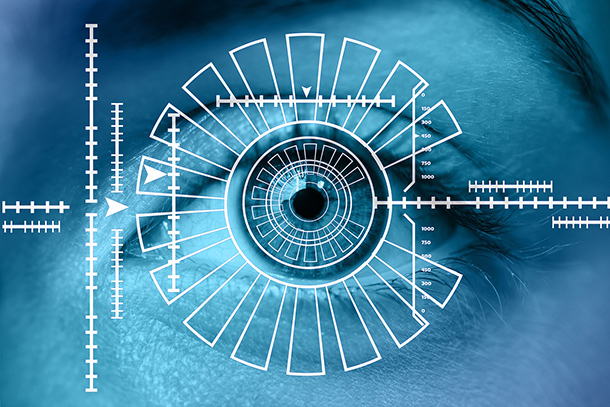
In a market increasingly defined by technology, we shouldn’t be surprised to see that trend continue for access control and physical security in 2019. What’s less clear (and perhaps more interesting) is how manufacturers, integrators and the public will reconcile the rise of technology with growing privacy concerns. If nothing else, it should make for an eventful 2019 in the field of access control and physical security.
Don’t expect radical changes in 2019—or at least not at the level of the consumer electronics market. We’re more likely to see an evolution of existing technologies and processes. Here are a few access control and physical security trends to watch for in 2019:
1. Advancements through A.I.
Although still in its infancy, artificial intelligence (AI) raises some intriguing possibilities for security and access control. Most of these possibilities, at least at this early stage, seem best suited to data analysis, especially with respect to video surveillance.
Security cameras have become ubiquitous, limited not just to shopping malls and transit hubs anymore. We see them on buses, in parking lots, watching over public spaces and private homes, in apartment hallways and nearly every store.
By leveraging the power and efficiency of technology, facility managers and security personnel can turn their attention to more pressing tasks.
Naturally the rapid spread of video surveillance raises the question of how to process and make sense of all that data. Employing people to watch over monitors all day and night is both costly and inefficient. And while we already have video analytics applications (which can track the flow of people, read license plates and detect loitering, for example), a more robust automated solution is needed.
“Welcome” to the machines
Enter: AI and machine learning. The technology is already being tested with video surveillance. In one example noted by tech blog The Verge, it catalogues items (vehicle models, clothing colours, etc.) and makes them easily searchable so security personnel can investigate and follow up on incidents more efficiently. Much like Google Translate, users of this AI-driven software can rate the suggested results to help the program give better results in future.
By leveraging the power and efficiency of technology, facility managers and security personnel can turn their attention to more pressing tasks. Undoubtedly the upfront investment in such a technology would not be small, but the potential for long-term savings is there, and ultimately the level of security should increase too.
Ethical dilemmas abound though. People are already (rightly) concerned about privacy, so any AI solution deployed in a public space would need to be sensitive to those concerns.
Questions notwithstanding, the potential benefit of AI in video surveillance would seem to far outweigh the negatives. And 2019 could be the year that we see this in action.
2. Biometrics get bigger

There’s been a lot of talk in recent years about the potential of biometrics, and so far we’ve seen at least some of that potential realized. Still, it feels like adoption in the access control and physical security markets has been much slower than with personal devices and high-security facilities.
That said, the growing acceptance of biometrics—primarily fingerprint and facial recognition technology—in the consumer electronics space, may well influence the same trend in access control.
Analysts are making a case for the use of biometrics in finance, especially for payment authentication and digital banking. And as noted by Bluefin, a payment security specialist, companies all over the world are already employing biometrics in a variety of creative ways, from travel and policing to insurance and healthcare.
One of the more attractive aspects of biometrics is the lack of a password or physical credential. In this era of endless distractions and multi-tasking, having one less thing to remember (or to lose, or to forget, or to have stolen) is a convenience with major appeal. Add to that the superior level of security provided by biometrics over knowledge-based forms of authentication, and it’s easy to see why people are jumping on the bandwagon.
Cost is, of course, an important consideration. But as with every technology, cost tends to decrease as demand increases and more manufacturers enter the picture, driving innovation. That should only help speed adoption of biometrics in 2019.
3. Sustainability becomes cool again
Being a responsible corporate citizen isn’t exactly a new concept, nor is it unique to the access control and physical security markets. But 2019 could see renewed interest in eco-friendly practices after years of green fatigue.
Whether or not these companies truly care about sustainability is less relevant than the perception of caring among their customers. In other words, it’s just good business to be on the side of the environment.
Building up that brand equity can be especially helpful when the capabilities and costs of products start to converge. All other things being equal, products made with sustainable materials and practices will tend to be favoured over competing products that aren’t.

Axis Communications, for one, has put sustainability high on its list of priorities. The security camera-maker has introduced more energy-efficient features into its products, reduced packaging and sought out local suppliers, among other steps.
It seems likely that other manufacturers and product designers will strive for sustainability, especially as the environment and climate change garner even more attention in 2019.
What else might 2019 have in store for the access control and physical security markets?
- Internet of Things (IoT) takes a big step forward
- Growing consumer demand for centrally-hosted SaaS (software as a service) platforms pushes cloud-based data storage to the forefront
- Interoperability becomes a best practice among manufacturers
- Product designers increase their focus on providing a simple user experience
- Cybersecurity, privacy and data protection become central themes for manufacturers
- Building automation grows in popularity, encouraging integration with access and security products
- Mobile phones finally gain acceptance as a common form of access credential
Whether or not these predictions come true, physical security and accessibility are sure to be priorities for organizations of all shapes and sizes, across all markets. And although many products are easier than ever to find, install and maintain, it never hurts to have the guidance of a trusted product expert and integrator on your side.
If 2019 is the year you plan to improve your security or access control, contact ABC for honest advice backed by 80 years of experience.


 blog
blog